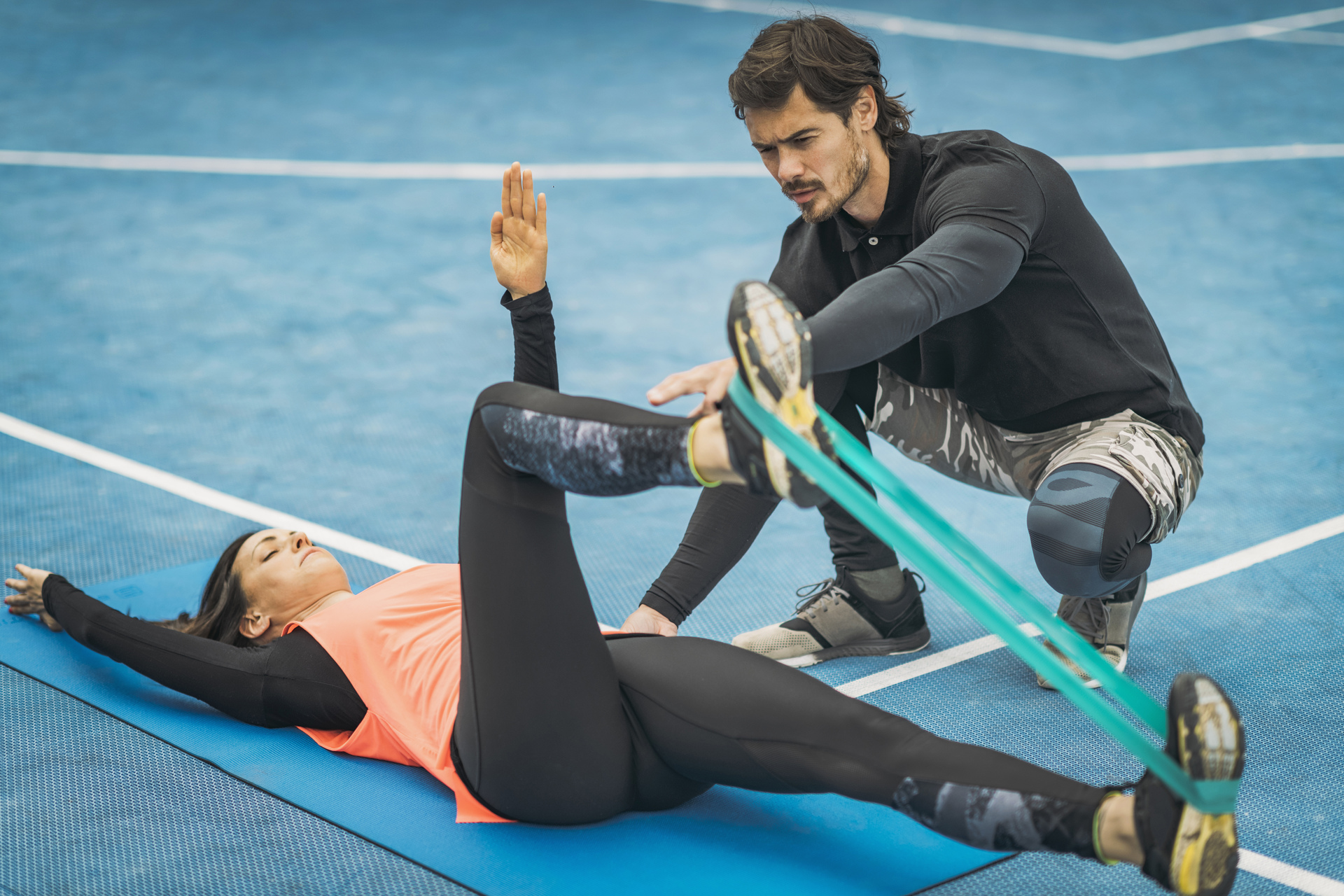
How to Bounce Back Stronger After an Injury with Physiotherapy
Sports injuries are a regrettable part of leading an active life. However, you may return to your sport with improved strength and performance if you take a calculated approach to recuperation. Sports therapy is crucial in this situation. At Rutherford Physiotherapy in Edmonton, we recognize that athletes encounter distinct challenges in their recovery from sports-related injuries, regardless of their level of competition. Our team of sports rehabilitation therapists is dedicated to managing sports injuries and providing rehabilitation physical therapy, ensuring individuals can safely return to their activities with enhanced strength.
What Is The Process Of Sports Injury Physiotherapy?
Sports injury physiotherapy treats and rehabilitates injuries sustained during sports or physical activity. Sprains and strains are acute, but tendinitis and stress fractures are chronic. Sports rehabilitation involves numerous methods to decrease discomfort, restore mobility, and strengthen the damaged part. Treatment often includes manual therapy, focused exercises, electrical stimulation or ultrasound, and lifestyle recommendations.
Soft tissue massage and joint mobilizations are two manual treatment procedures that successfully reduce pain, increase mobility, and speed up the healing process. Rebuilding muscular strength, regaining range of motion, and avoiding re-injury all depend on therapeutic exercises, which include strength training and flexibility work.
Phases Of Sports Injury Management
Sports injury treatment usually has many phases that address distinct healing components. Recovery involves three main stages:
1. Acute Phase (First Injury and Pain Management)
Following an accident, the main priorities are minimizing inflammation, controlling pain, and reducing additional damage. Physical therapy and sports rehabilitation excel at this. Ice treatment, rest, compression, and elevation (R.I.C.E.) are used early on to control swelling and discomfort. Sports rehabilitation therapists may use electrical stimulation to enhance recovery.
2. Recovery and Mobility (Regaining Strength and Range)
Once acute discomfort diminishes, our physiotherapist will work on enhancing your range of motion, strength, and flexibility. We use personalized treatments to improve injured muscles, joints, and ligaments. We also enhance functional mobility to help you do daily duties or return to sports.
3. Rehabilitation and Performance (Full Recovery, Injury Prevention)
Sports therapy concludes with regaining strength and endurance to return athletes to pre-injury levels. This phase also focuses heavily on injury prevention, treating any movement dysfunctions or deficiencies that may have led to the injury in the first place. Our physiotherapist will lead you through progressive exercises that imitate your sport’s motions to help you recover faster.
Why Is Physical Therapy Important For Athletes?
Sports injury rehabilitation requires physical treatment. Resting the wounded region is one phase in accident recovery. Physical therapy helps people heal faster and move around more easily. Physiotherapy is important for players for many reasons, including:
1. Pain Management Strategies:
For athletes who push themselves to the maximum, injuries may be quite uncomfortable. Exercise and massage may reduce pain by increasing flexibility, lowering inflammation, and boosting blood flow. For athletes to begin their recovery and perform effectively in competition, pain management is crucial.
2. Restoring Mobility:
Sports rehabilitation and physical therapy restore mobility in injured regions. Regaining complete mobility after an ankle or shoulder injury is essential to avoiding long-term dysfunction and enabling an athlete to resume their sport as much as is practical.
3. Physical Conditioning and Strengthening:
Physical therapy-assisted sports rehabilitation includes muscle strengthening. Workouts target the affected region and surrounding muscles, decreasing injury risk and preparing the body for sports.
4. Strategies for Injury Prevention:
Sports rehabilitation’s ability to avoid injuries is a significant benefit. To reduce the chance of re-injury or other injuries, a sports rehabilitation therapist will help players execute activities that improve appropriate biomechanics and functional movement patterns. Furthermore, athletes may receive instruction on warm-up techniques, stretching, and strengthening exercises to guarantee their bodies are in optimal condition.
What To Expect From Sports Rehabilitation?
When you start sports rehabilitation, you must understand the procedure and what to anticipate. Rutherford Physiotherapy in Edmonton offers a supportive and organized setting for your rehabilitation.
1. Preliminary Evaluation:
The first step is to get a full assessment of your problem. Your sports rehabilitation therapist will review your full medical history, observe your movements, and perform any necessary tests to correctly identify your injury. This review will help you develop a personalized recovery plan.
2. Therapeutic Approaches and Physical Activities:
After the test, our physiotherapist will come up with a treatment plan that could include physical therapy, focused routines, or other methods. These treatments aim to improve functionality, lessen pain, and restore strength and mobility.
3. Guidance and Insights:
We will go over how to avoid injuries, including how to warm up, stretch, and cool down. When you start playing sports again, our physiotherapist could advise you to change your training regimen or give you tips on how to stay injury-free.
4. Tracking your progress:
Throughout your recovery, our physiotherapist will keep track of your progress. Your treatment plan will be adjusted as necessary to ensure you remain on track to return to your sport with enhanced strength and resilience.
Your Journey To A Healthy, Active Lifestyle
Sports therapy is the key to a complete recovery after an injury. Rutherford Physiotherapy is an Edmonton-based physical therapy and rehabilitation facility that helps athletes overcome injuries sustained in sports activities so that they may return to their previous levels of performance. We make sure every patient realizes their full potential by using specialized methods, innovative approaches, and an emphasis on injury prevention. To enhance your performance and promote your health, we offer a variety of sports rehabilitation techniques designed to support your recovery.

